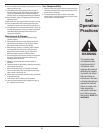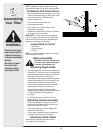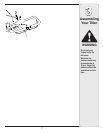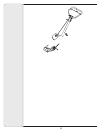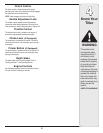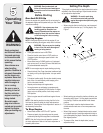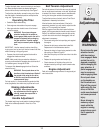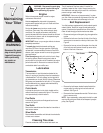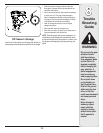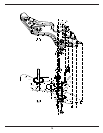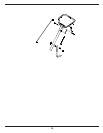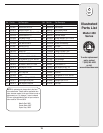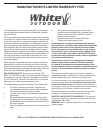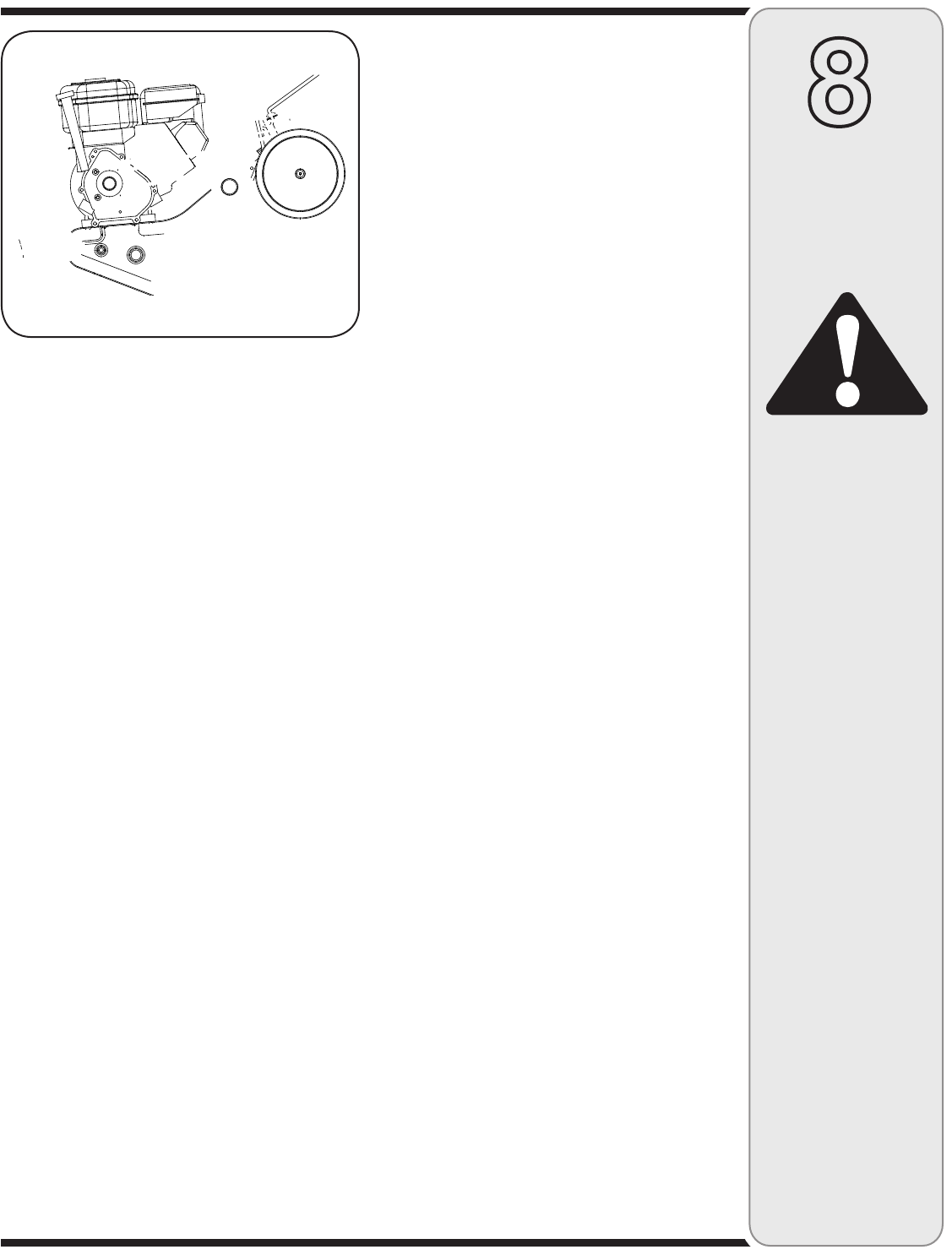
13
8
Trouble
Shooting
Guide
WARNING
D e he gea
eleci hadle
ih he heel
ie egaged. Make
ceai he i i
ed cleel
befe chagig he
gea eleci. A
aial egagee
a be ecea
he egagig ie.
D h d
he hadle
ha he heel ae
lifed ff he gd
hile ig he ie
die, he ille
cld e backad
ad cae eal
ij.
Nee ae
ake a adj-
e hile he
egie i ig,
ece hee eci-
fied i ea’
aal.
Off-Season Storage
If the tiller will not be used for a period longer than 30 days, the
following steps should be taken to prepare the tiller for storage.
• Clean the exterior of engine and the entire tiller
thoroughly. Lubricate the tiller as described in the
lubrication instructions.
• We do not recommend the use of pressure washers
to clean your unit. They may cause damage to
electric components, spindles, pulleys, bearings or
the engine. The use of pressure washers will result
in shortened life and reduce serviceability.
• Refer to the engine manual for correct engine
storage instructions.
• Wipe tines with oiled rag to prevent rust.
• Store tiller in a clean, dry area. Do not store next to
corrosive materials, such as fertilizer.
NOTE: When storing any type of power equipment in an
unventilated or metal storage shed, care should be taken
to rustproof the equipment. Using a light oil or silicone, coat
the equipment and especially any springs, bearings, and
cables.



